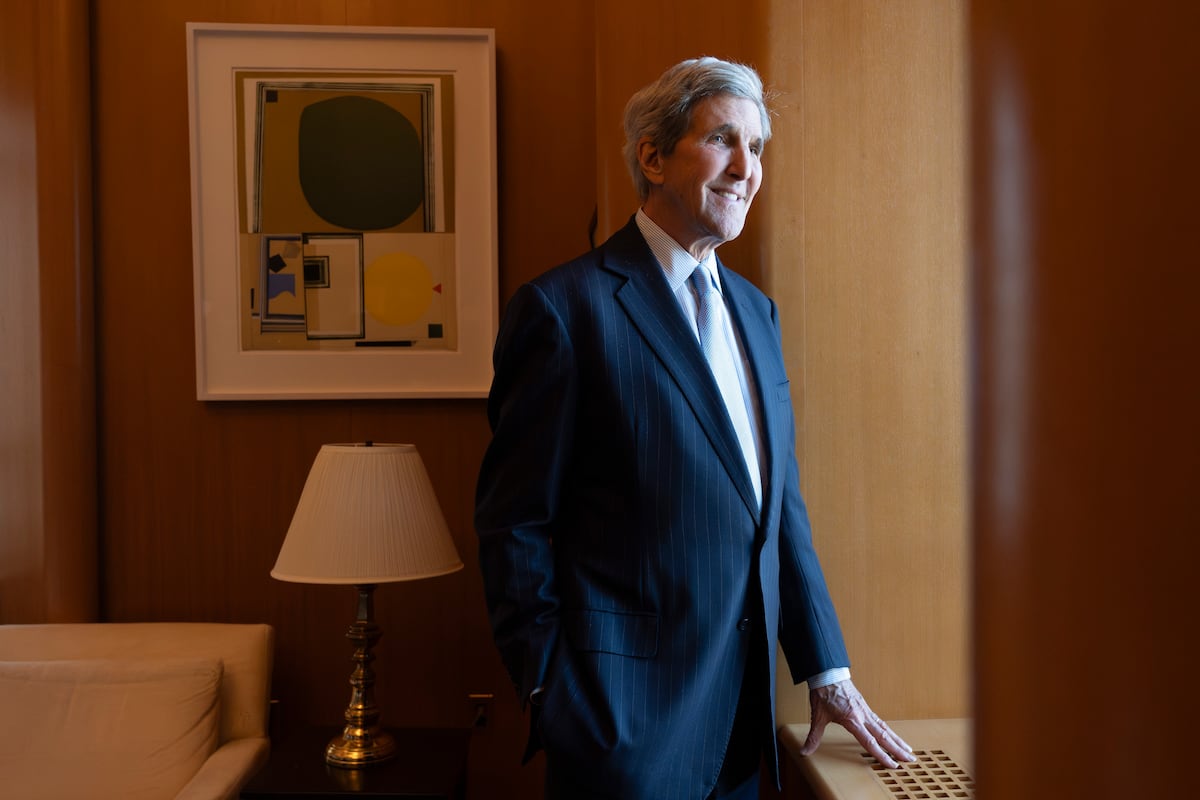
By Lauren Beavis
This striking photo of a copper mine is one of the winning images in a worldwide photography competition, which featured melting ice sheets and flooding rainforests.
Earth Photo engages with still and moving image makers to showcase the issues affecting the climate and life on the planet.
The winning Earth Photo 2025 went to Lorenzo Poli, for ‘Autophagy’: which shows a stark black-and-white photograph taken at the Chuquicamata mine in Chile.
It is the second-largest open-pit copper mine in the world by excavated volume, and one of the deepest, plunging nearly 1,000 meters (3,300 feet) into the Earth.
The image captures an abandoned miners’ town and cemetery gradually being subsumed by mineral ore extraction, the image documents the “gridded impermanence of extractive cycles, overpowering life and death”, explains Lorenzo.
Taken from above, the photograph shows the vastness of Chuquicamata, and the marks humankind make on the natural world.
Lorenzo said the piece highlights the “unrelenting expansion of extractive endeavours”, telling a story of unsustainable mining practices fuelled by increased global demand for copper “driven by its role as a critical primary element in the transition to renewable energy”.
Created in 2018 by Forestry England, the Royal Geographical Society and Parker, the poignant images in the Earth Photo competition all aim to reveal different narratives and tell the stories of people and environments which are affected by the climate crisis.
Out of over 1,582 entries, a judging panel made up of experts from the fields of photography, film, geography and environment selected the Earth Photo 2025 shortlist, which entailed: 195 images and eight videos by 40 photographers and filmmakers from around the world.
Another award, The Royal Geographical Society – Climate of Change Award worth $500 for a project that explores the impacts of climate change upon people, environments and wildlife, went to Liam Man for his piece ‘Carcass of the Ice Beast.’
The photograph shows a ‘wounded glacier’ – with tattered blankets covering the Rhone Glacier in Switzerland.
The image shows the remains of thermally reflective blankets which were used back in 2009 to slow the glacier’s melting. These blankets covered five acres of the glacier in a bid to deflect infrared radiation.
Liam said: “Today, these coverings hang in tatters, like the torn skin of a dying giant.
By anthropomorphizing (attributing human characteristics or behavior) the glacier, Liam wanted viewers to “bear witness to the cryosphere’s beauty and its vulnerability”.
Liam said the piece acts as a “tribute to human effort and a sobering reminder of its limits.
“Despite the dedication of a few, their interventions could not halt the glacier’s retreat.”
The message of the wounded glacial scene becomes clear: “climate change cannot be solved through isolated actions alone.”
Another winner of the ‘The Forestry England – Forest Ecosystem Award’ went to Mateo Borrero for ‘Waterline.’
The powerful image of a Ticuna man stood in front of a 500-year-old tree with a striking waterline beside him was taken in the Peruvian Amazon rainforest.
In this rainforest, the rainy season historically hits the region between April and May, marking the area’s trees with waterlines showing how high the flood waters rise annually.
In this image, the Ticuna man stands beside the vast five-centuries old Celiba tree in the rainforest, one which has clearly seen hundreds of rainy seasons as shown by its waterline at the man’s shoulders, which cuts the image into two distinct planes.
Mateo said: “This photograph, taken in May 2024, shows that the water level should be at its maximum; however, rainfall was scarce and, by the peak of the rainy season, non-existent.”
His piece highlights the changes affecting Peruvian Amazonian communities, and the shared plight of those inhabiting the region.
Issam Chorrib, a 24-year-old from Morocco, won the David Wolf Kaye Future Potential Awardsfor his photograph La Hepica – Consumed Living Spaces.
Issam’s image was taken in Larache, Morocco.
It captures a forest once used for leisure and reflection, now consumed by fire.
Part of his series La Hepica: Consumed Living Spaces, “the image underscores the increasing fragility of ecosystems in the face of climate change”, Issam explained.
Prolonged droughts and environmental mismanagement have made places like La Hepica increasingly vulnerable to wildfire.
“Once a sanctuary of biodiversity and calm, its charred remains now stand as a stark reminder of what we risk losing”.
Louise Fedotov-Clements, Director of Photoworks, said: “In a world where the climate crisis often feels distant, overwhelming or abstract, filmmakers and photographers bring us face to face with its reality.
“They document rising waters, burning forests, and displaced lives, not as statistics, but as stories.
“They capture and translate the realities of environmental breakdown and the strength of those living through it.
“Within each edition of Earth Photo we see a compelling diversity of international projects using these powerful visual tools to share the beauty and tragedy of life on our planet.
“Through the lens, film and photography transforms climate change from an abstract threat into a visceral reality, capturing not only the damage, but the resilience of communities and ecosystems in the face of environmental crisis.
“As a juror, I’m continually struck by how the works confront us with the urgency of the climate challenges.
“They do more than document, they bear witness.
“In every frame, there is a call, not just to look, but to respond.”
Other winners include:
Moving Image: Mohammad Rakibul Hasan and Fabeha Monir, for their film The Taste of Honey.
Sidney Nolan Trust Residency Prize and Photoworks Digital Residency: Shane Hynanfor his series Beneath | Beofhód.
David Wolf Kaye Future Potential Award – Film: Miranda Barton, for her film Soft Fascination.
New Scientist Editors Award, Mentoring with Tim Boddy, Picture Editor: Vivian Wan for Rotary Screw Taps.
New Scientist Editors Award, Mentoring with David Stock, Head of Editorial Video: Adam Sebire, for his film Sikorluppoq (‘the sea ice is not good’).
Joe Smith, Director of the Royal Geographical Society, said: “Earth Photo demonstrates how photography can engage with the pressing global challenges of our time.
“This year’s winning images and videos are not only visually compelling but also serve as a powerful reminder of the climate and nature crises and the profound environmental and social impacts across the world.
“While some of the works evoke concern and urgency, others highlight human resilience and the capacity to adapt.
“Taken together, they show us the interconnectedness of people and planet and our reliance on the world around us.”
The shortlisted and award-winning works are available to see in the Earth Photo exhibition, now open at the Royal Geographical Society, in London, until 20 August 2025, in seven Forestry England forests from 17 June 2025 to 19 March 2026, in 10 National Trust locations from 21 June to 23 November 2025, and Sidney Nolan Trust from 5 July to 27 September 2025.









 English (US) ·
English (US) ·